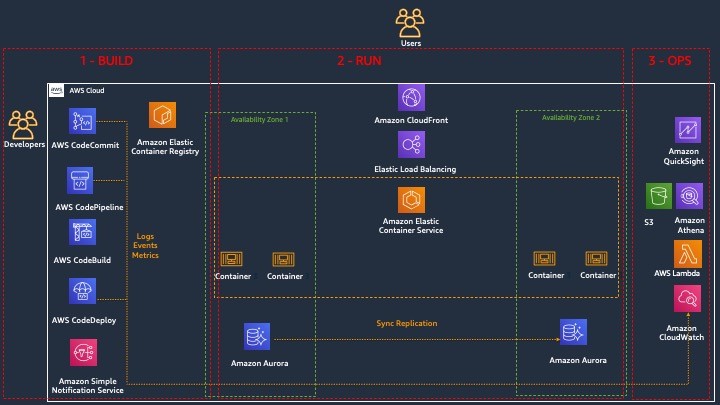AWS Architecture Blog
Category: Developer Tools
Field Notes: Use AWS Cloud9 to Power Your Visual Studio Code IDE
Everyone has their favorite integrated development environment, or IDE, as it’s more commonly known. For many of us, it’s a tool that we rely on for our day-to-day activities. In some instances, it’s a tool we’ve spent years getting set up just the way we want – from the theme that looks the best to […]
How Financial Institutions can use AWS to Address Regulatory Reporting
Since the 2008 financial crisis, banking supervisory institutions such as the Basel Committee on Banking Supervision (BCBS) have strengthened regulations. There is now increased oversight over the financial services industry. For banks, making the necessary changes to comply with these rules is a challenging, multi-year effort. Basel IV, a massive update to existing rules, is […]
Rate Limiting Strategies for Serverless Applications
Serverless technologies reduce the work needed to set up and maintain computing resources, provide built-in scalability, and optimize agility, performance, cost, and security. The pay-as-you-go model is particularly liberating for developers. You can fail fast, experiment more, and do it fairly cheaply. However, serverless brings its own challenges. In this blog, we’ll examine how to […]
Ensure Optimal Application Performance with Distributed Load Testing on AWS
As a modern enterprise, your customers expect 100% availability of your critical web and mobile applications. Unforeseen events such as COVID-19, have necessitated many customer engagements to become virtual. This has made web and mobile applications even more critical. Distributed Load Testing on AWS (DLT) helps you automate the performance testing of your software applications […]
Journey to Adopt Cloud-Native Architecture Series: #3 – Improved Resilience and Standardized Observability
September 8, 2021: Amazon Elasticsearch Service has been renamed to Amazon OpenSearch Service. See details. In the last blog, Maximizing System Throughput, we talked about design patterns you can adopt to address immediate scaling challenges to provide a better customer experience. In this blog, we talk about architecture patterns to improve system resiliency, why observability […]
Disaster Recovery (DR) Architecture on AWS, Part I: Strategies for Recovery in the Cloud
As lead solutions architect for the AWS Well-Architected Reliability pillar, I help customers build resilient workloads on AWS. This helps them prepare for disaster events, which is one of the biggest challenges they can face. Such events include natural disasters like earthquakes or floods, technical failures such as power or network loss, and human actions […]
Scaling RStudio/Shiny using Serverless Architecture and AWS Fargate
Data scientists use RStudio server as an Integrated Development Environment (IDE) to develop, publish, and share interactive web dashboards built on Shiny Server. Although it is possible to use virtual server infrastructure in the cloud to run R workloads, containerization offers significant operational benefits. Migrating R workloads into a serverless model in AWS, customers can […]
Scaling up a Serverless Web Crawler and Search Engine
Introduction Building a search engine can be a daunting undertaking. You must continually scrape the web and index its content so it can be retrieved quickly in response to a user’s query. The goal is to implement this in a way that avoids infrastructure complexity while remaining elastic. However, the architecture that achieves this is […]
Field Notes: Comparing Algorithm Performance Using MLOps and the AWS Cloud Development Kit
Comparing machine learning algorithm performance is fundamental for machine learning practitioners, and data scientists. The goal is to evaluate the appropriate algorithm to implement for a known business problem. Machine learning performance is often correlated to the usefulness of the model deployed. Improving the performance of the model typically results in an increased accuracy of […]
Why Deployment Requirements are Important When Making Architectural Choices
Introduction Too often, architects fall into the trap of thinking the architecture of an application is restricted to just the runtime part of the architecture. By doing this we focus on only a single customer (such as the application’s users and how they interact with the system) and we forget about other important customers like […]









